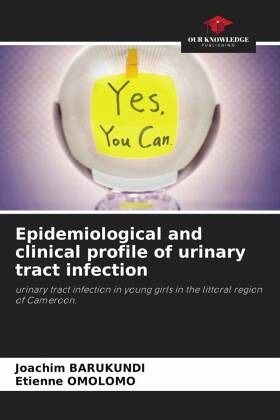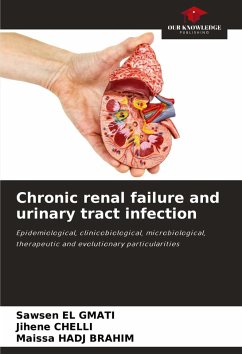
Epidemiological and clinical profile of urinary tract infection
urinary tract infection in young girls in the littoral region of Cameroon.
Versandkostenfrei!
Versandfertig in 6-10 Tagen
29,99 €
inkl. MwSt.

PAYBACK Punkte
15 °P sammeln!
Urinary tract infections are very common in women, especially during periods of ovarian activity. Out of 150 urine samples from girls in the selected schools, 52 were positive by urine dipstick, i.e. a prevalence of 34.70%. Of all the germs isolated, the greatest number of infections were caused by Gram-negative germs, with a prevalence of 83.33%. Of the samples cultured, 29 out of 52 grew, i.e. 56%; Salmonella Spp, with a prevalence of 37.93%, accounted for the majority of urinary tract infections among Gram-negative germs. Methodologically, we carried out quantitative, descriptive and analyt...
Urinary tract infections are very common in women, especially during periods of ovarian activity. Out of 150 urine samples from girls in the selected schools, 52 were positive by urine dipstick, i.e. a prevalence of 34.70%. Of all the germs isolated, the greatest number of infections were caused by Gram-negative germs, with a prevalence of 83.33%. Of the samples cultured, 29 out of 52 grew, i.e. 56%; Salmonella Spp, with a prevalence of 37.93%, accounted for the majority of urinary tract infections among Gram-negative germs. Methodologically, we carried out quantitative, descriptive and analytical research. Genital infection in women is much more closely related to the position of the genital tract in relation to the urinary tract. These bacteria are responsible for vaginitis (especially in young girls) and endocervicitis. They can cause major vaginal atrophy in women. Clinical manifestations vary according to the age of the child, and clinical signs are all the more misleading the younger the child, hence the importance of prevention.












